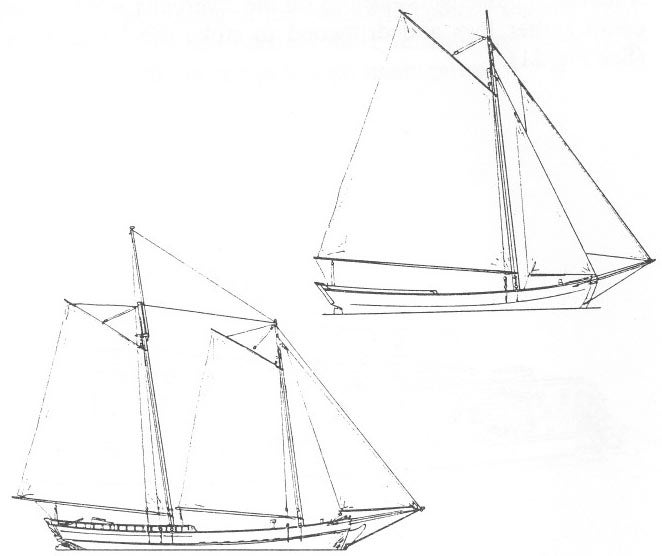
Schooner, on the left (Alford 1990:34)
Schooners were the vessel that slowly replaced the sloop. The key characteristic of the schooner was two masts with a gaff mainsail. Like sloops, these vessels were fore and aft rigged, which wallowed the vessel to sail safely since it had little leeway. Compared to sloops, schooners were able to sail better in more weather types as the two masts were better suited for balance. It has also been argued by both Alford and Dodds that schooners required less crew to sail compared to sloops, but Dodds also notes that the personnel record keeping shows that schooners were using more crew than sloops. This smaller crew has been argued for the reason that sloops were replaced over time, but could also be explained by the schooners being able to be larger than sloops (Alford 1990:33; Dodds 2009:65-69).
Schooners were ideal vessels for the Carolina environment since they were similar to schooners and had shallow drafts that could navigate the shallow inlets surrounding the area, but also have enough cargo capacity to hold large amounts of cargo (Dodds 2009:62-63).
The first schooner that was built in North Carolina was constructed in 1698. By the 1740s, schooners had become 27% of boats constructed in North Carolina. In the 1750s schooners had surpassed sloops in popularity with schooners being 38% of the vessels built while sloops were 36% of the constructed vessels. This increase continued until the 1840s when 92% of vessels built in North Carolina were schooners. After the 1840s, the prevalence of schooners began a downward trend, however, they still remained the most common boat built in the states until 1909. It should be noted that this record keeping would not encompass all of the boats produced in this time period, as records between the American Revolution and the Civil War are incomplete and would not have included many of the smaller vessels made by families or groups for personal use (Dodds 2009:61-62).
